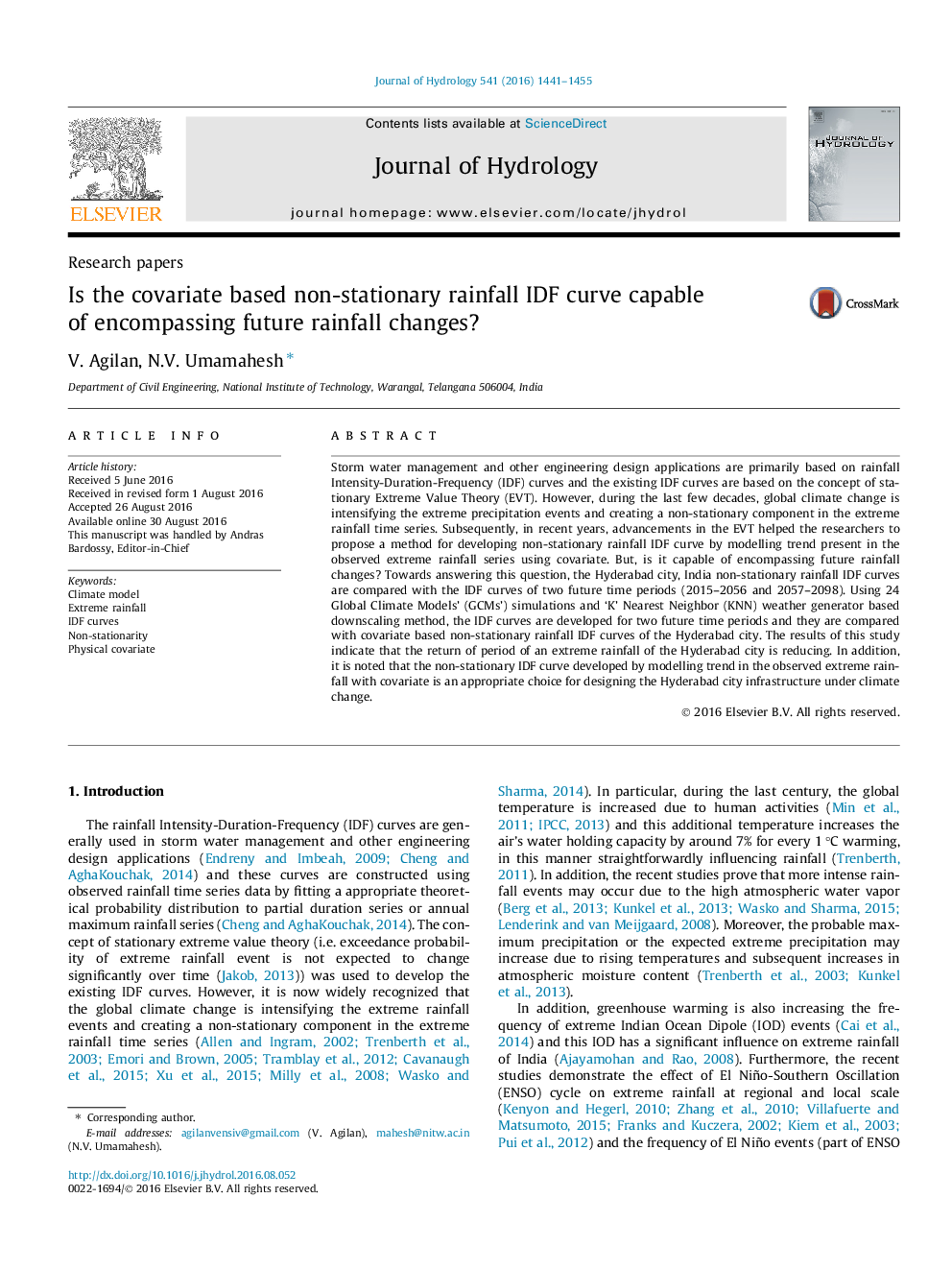| کد مقاله | کد نشریه | سال انتشار | مقاله انگلیسی | نسخه تمام متن |
|---|---|---|---|---|
| 6409507 | 1332870 | 2016 | 15 صفحه PDF | دانلود رایگان |

- Covariate based non-stationary rainfall IDF curve is developed.
- Future IDF curve is developed using GCM simulations and KNN weather generator.
- The return of period of an extreme rainfall of the Hyderabad city is reducing.
- Non-stationary IDF curve is an appropriate choice for infrastructure design.
Storm water management and other engineering design applications are primarily based on rainfall Intensity-Duration-Frequency (IDF) curves and the existing IDF curves are based on the concept of stationary Extreme Value Theory (EVT). However, during the last few decades, global climate change is intensifying the extreme precipitation events and creating a non-stationary component in the extreme rainfall time series. Subsequently, in recent years, advancements in the EVT helped the researchers to propose a method for developing non-stationary rainfall IDF curve by modelling trend present in the observed extreme rainfall series using covariate. But, is it capable of encompassing future rainfall changes? Towards answering this question, the Hyderabad city, India non-stationary rainfall IDF curves are compared with the IDF curves of two future time periods (2015-2056 and 2057-2098). Using 24 Global Climate Models' (GCMs') simulations and 'K' Nearest Neighbor (KNN) weather generator based downscaling method, the IDF curves are developed for two future time periods and they are compared with covariate based non-stationary rainfall IDF curves of the Hyderabad city. The results of this study indicate that the return of period of an extreme rainfall of the Hyderabad city is reducing. In addition, it is noted that the non-stationary IDF curve developed by modelling trend in the observed extreme rainfall with covariate is an appropriate choice for designing the Hyderabad city infrastructure under climate change.
Journal: Journal of Hydrology - Volume 541, Part B, October 2016, Pages 1441-1455